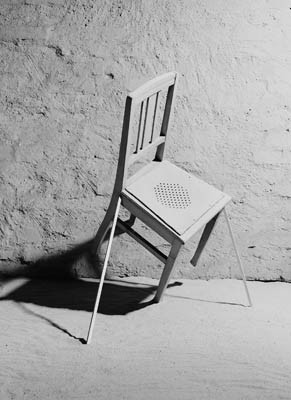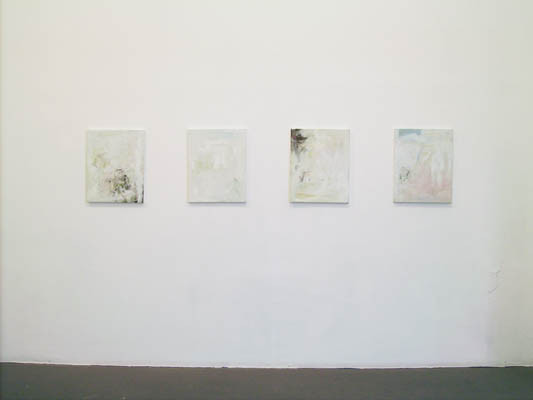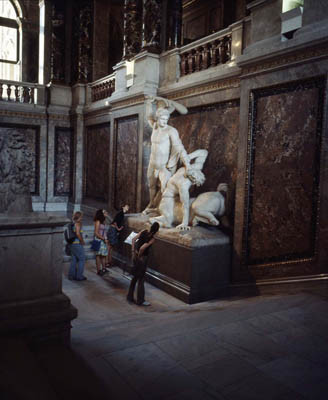"A4" - Regine Müller-Waldeck, Frank Berger, Dirk Scheidt, Arthur Zalewski
11 - 25 Aug 2007

Dirk Scheidt, Balancierender Stuhl, Tanzender Tisch, 2006, silver gelantine, each 76 x 100 cm, ed. 3+1 a.p

Dirk Scheidt, Balancierender Stuhl, Tanzender Tisch, 2006, silver gelantine, each 76 x 100 cm, ed. 3+1 a.p

Arthur Zalewski, you say I can't stop, I say you can't stop, 2007, oil on canvas, monochrome, 4 pieces, each 40 x 50 cm
Regine Müller Waldeck’s work ‘Zaun’ (fence) encounters us as a three-dimensional image of sculpture, arrangement of objects and installation. Inevitably the constituents connect in front of the spectator’s eyes setting an examination of content in motion: ’some are in, others are out and anyway – everyone has to carry one’s burden’. Even when Regine Müller-Waldeck approaches major themes of life, her works always preserves an accessibility to be personally experienced.
Frank Berger focuses in his slide projection on the museal presentation of a sculpture by Antonio Canova that debates the violent process of man dissociating from nature and its submission as core of the development of civilization. By means of only minimally alternating pictures he cross-fades the museal scenery with the changing positions of the spectator. In doing so, the relationship between incorporated violence and today’s spectators in museums reveals in a subtle way as being merely aesthetic.
In Dirk Scheidt’s new photographies we meet a balancing chair and a dancing table. His pictures have the effect of a ‘motion study of furniture’ that are infused by human spirit and will. Contrary to one’s expectations, this – already as such – impossible seeming occurence becomes however plausible. Dirk Scheidt achieves this effect by introducing his objects in the manner of slapstick, dancing-like ‘poses’ that are stored in our subconscious and the precisely caught gesture of the motion.
Arthur Zalewski assigns in “You Say I Can`t Stop, I Say You Can`t Stop “ the conceptual approach of his arrangements to the classical format of painting. Layering and overlapping of quotations and references meet a playful association of the ‘prerequisites of the medium’ that experience a different evaluation by the intended imperfection and trust to chance.
Opening hours: Tue - Sat 11-18 h
Frank Berger focuses in his slide projection on the museal presentation of a sculpture by Antonio Canova that debates the violent process of man dissociating from nature and its submission as core of the development of civilization. By means of only minimally alternating pictures he cross-fades the museal scenery with the changing positions of the spectator. In doing so, the relationship between incorporated violence and today’s spectators in museums reveals in a subtle way as being merely aesthetic.
In Dirk Scheidt’s new photographies we meet a balancing chair and a dancing table. His pictures have the effect of a ‘motion study of furniture’ that are infused by human spirit and will. Contrary to one’s expectations, this – already as such – impossible seeming occurence becomes however plausible. Dirk Scheidt achieves this effect by introducing his objects in the manner of slapstick, dancing-like ‘poses’ that are stored in our subconscious and the precisely caught gesture of the motion.
Arthur Zalewski assigns in “You Say I Can`t Stop, I Say You Can`t Stop “ the conceptual approach of his arrangements to the classical format of painting. Layering and overlapping of quotations and references meet a playful association of the ‘prerequisites of the medium’ that experience a different evaluation by the intended imperfection and trust to chance.
Opening hours: Tue - Sat 11-18 h


